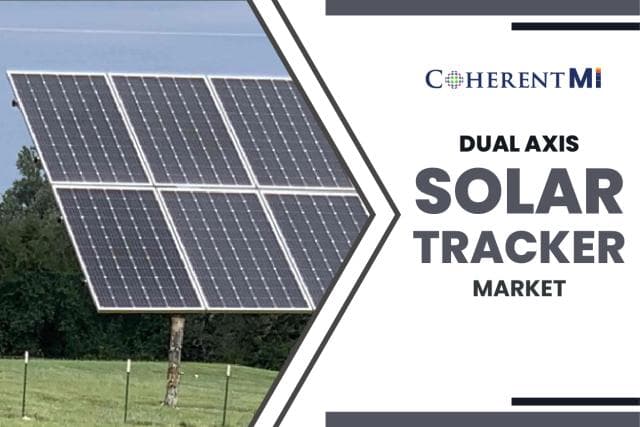Solar energy is one of the most promising renewable energy sources which can help reduce dependence on conventional sources of energy and mitigate environmental issues associated with them. However, a key challenge faced in harnessing solar power is optimizing energy collection from the sun which moves across the sky throughout the day. Dual axis solar trackers provide an effective solution to this problem.
What is a Dual Axis Solar Tracker?
A dual axis solar tracker is a system that adjusts the orientation of solar panels to follow the sun's movement across the sky. It can rotate the solar panels on two axes i.e. east-west (azimuth) and north-south (altitude) axes to maximize sunlight exposure throughout the day. In comparison to fixed-mount or single axis tracking systems, dual axis tracking allows for more accurate alignment of solar panels with the sun's position and thereby significantly increases solar energy generation.
Working of a Dual Axis Solar Tracker:
A dual axis solar tracker relies on sensors, microcontrollers and actuators for its functioning. Light-sensitive sensors are commonly used to detect the location of the sun and position the panels perpendicular to incoming sunlight. Microcontrollers receive input from sensors and send signals to actuators such as stepper motors to alter the position of solar panels. Periodic adjustments are made automatically to keep panels oriented towards the sun as it moves across the sky. Modern trackers can detect the sun's position within a few degrees and reposition panels very precisely. Advanced systems also employ solar positioning algorithms and weather data for optimal sun-tracking.
Benefits of Increased Energy Production:
The ability of dual axis trackers to continuously align panels with the sun throughout the day results in significant increases in solar energy harvest compared to fixed or single axis systems. Studies show that dual axis tracking can boost energy production by 25-30% annually on average. However, gains may be even higher, exceeding 40% in sunny locations with more variable weather patterns. This improved generation has multiple advantages - higher financial returns due to more kilowatts generated, lower levelized cost of energy and increased viability of solar power especially in areas with limited solar resources.
Reduced Land Requirement:
Another notable benefit of dual axis trackers is that they require less land area compared to fixed-tilt installations to generate the same amount of annual solar energy output. This is because trackers are able to capture more solar energy per panel area. Estimates indicate dual axis systems needing 10-30% less physical space for an equivalent electricity generation capacity. This offers significant land-use advantages, making solar more practical even in locations with space constraints.
Wider Application Scope:
With higher efficiencies and lesser space needs, dual axis trackers have opened up new application opportunities for solar power beyond utility-scale projects. They are increasingly being utilized for commercial and industrial installations on rooftops and ground-mounted systems. Some emerging applications include agricultural solar where trackers mounted over crop fields generate energy without compromising farming activities. Overall, dual axis tracking technology has played a key role in expanding technical and economical viability of solar power worldwide.
Design and Maintenance Requirements:
While beneficial, dual axis trackers also present some design and maintenance challenges that need consideration. The mechanical design must account for wind and snow loads on moving structures to ensure long lasting robustness under tough weather conditions. Optimal layout and arrangement of trackers over large areas is another design aspect to reduce shading and obstruction. Periodic cleaning and lubrication of moving parts is also required. However, modern dual axis trackers come equipped with sensors to monitor performance and stow themselves in high winds to minimize damage risks. With appropriate setup and scheduled servicing, they have demonstrated over 25 years of reliable operation.
Conclusion: Dual axis solar tracking is an important technology development that significantly improves the energy output from PV installations. By continually aligning solar panels perpendicular to incoming sunlight, trackers maximize solar exposure and thereby increase generation by 25-40% compared to fixed-tilt or single axis systems. This enhanced production, coupled with reduced space requirements makes solar power more economically viable across a wider range of project scales and locations. While requiring complex mechanics, dual axis trackers have proven highly reliable with minimal maintenance needs. Overall, they have emerged as a key enabler to optimize solar resources and will continue advancing the reach of solar power worldwide.
